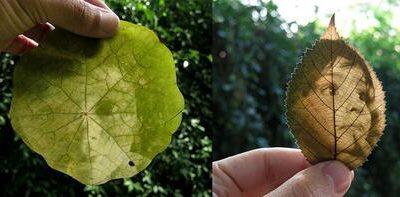An Uruguayan photographer used nature to reveal photos of plant leaves and petals through sunlight printed images with their chlorophyll and natural pigments.
Taco Queen, snuff, ivy, blackberry, paradise, elephant ear, and even parsley are just some of the plants that an Uruguayan photographer used to reveal the pictures that he took of his child.
Federico Ruiz Santesteban decided to use an old technique that uses vegetable photosensitivity to print images, ie, leaves and petals contain no dyes, chemicals, and spiked emulsions, and that’s what makes this job interesting: using chlorophyll and nature pigments.
Under the title ‘The Strange Case of gardeners’ Ruiz symbolically revealed a story as it is photographs showing the growth of his son, who expressed a keen interest in gardening. The idea that reflects this shows that the plants began to thank the child for caring for them, through these ‘revelations’.
For those interested in the technical aspect of the process through which it was possible to obtain these photographs : from a digital photograph turned into a piece that is used on ‘negative’ mode, the sun’s rays as ‘enlarger’ are used and the leaves and petals as photo paper instead of containing an artificial emulsion, having their natural photosensitive components, which are exposed to the sun creating shadows and access to the light .
Experiment with natural emulsions represents the possibility of access to more people to learn this type of photography, so this work could represent the start of something bigger.













